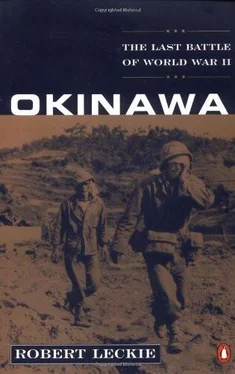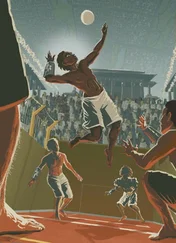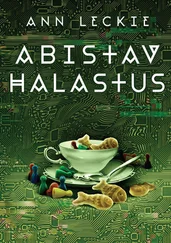The next day they went up to stay.
Four days of full-scale attack, the hammering of two Marine regiments and supporting arms, had worn the complex’s defense thin. Sugar Loaf was ready to fall.
Captain Howard Mabie brought his assaulting company up to the edge of the low ground opposite the hill. Artillery and mortars plastered the crest while three tanks slipped around the left flank. The barrage stopped. The Japanese rushed from their caves below the reverse slope to occupy the crest. The tanks took them under fire, surprised them and riddled them.
Rocket trucks raced down from the north, bumping and swaying over a saddle of ground, stopped, loosed their flights of missiles, whirled and careened away with a whine of changing gears and a roar of wasted gasoline—just avoiding the inevitable Japanese artillery shells crashing in behind them. The rockets made Sugar Loaf’s hillsides reel and reverberate as though a string of monster firecrackers had been set off. Artillery began again. The Marines sprinted over the field and up Sugar Loaf, one platoon taking the right face, peeling off its fire teams, another sweeping up on the left. They met on the crest, formed, and swept down the reverse slope, killing as they went. Back came the message:
“Send up the PX supplies. Sugar Loaf is ours.”
It was—and it wasn’t—for it took the fresh Fourth Marines who had relieved the fought-out Twenty-ninth four more days to drive deeper into the complex. The Sixth Marine Division itself lost a total of 2,662 killed and wounded in this bitter battle, with another 1,289 felled by combat fatigue. In the end, after the Half-Moon was taken and the Sixth stood poised to drive down-island into Naha, they came under plunging enemy artillery fire from the left on Shuri Heights.
The Sixth could not strike at Naha until the First destroyed the enemy on Shuri Heights.
The First Marine Division was “processing” its way south.
This was the cold, grim term coined by Major General del Valle to describe the cold, grim warfare that his troops were fighting en route to Shuri Heights. Along that way lay Dakeshi Ridge, Dakeshi Town, Wana Ridge, Wana Draw—those now-familiar formidable jumbles of stone-steel-and-concrete that could only be made smooth by the “processing” of tank-infantry-flamethrower teams. These four places were the sentinel forts guarding the northwest way into the heart of the Naha-Shuri-Yonabaru line at Shuri Castle. Moving down against them, its regiments leapfrogging one another all along the pitiless way, the First Marine Division was exposed to almost constant fire from its left flank and struck unceasingly from its front. The deeper the advance, the more numerous and formidable became the defenses in depth, the more difficult the terrain.
On May 11 the First began bucking at Dakeshi Ridge and Dakeshi Town. Both fell after a seesaw three-day battle, the Americans plodding forward by day, the Japanese counter-attacking by night. Daylight sometimes meant a fresh attack to recover ground surrendered during the night. Platoons took a position at the cost of three-fourths of their men, then tried to hang on with the survivors. Sometimes they could not. In Dakeshi Town the Marines found a labyrinth of tunnels, shafts, and caves, with snipers everywhere among the ruins—crouching behind broken walls, hidden in wells or cisterns. But Dakeshi Town also fell, and on May 14 the First Marine Division entered Wana Draw.
Wana Draw was a long, narrowing ravine running east to Shuri. It was formed by the reverse slope of Wana Ridge on its left and the forward slope of another ridge to the right. All its low, gently rising ground was covered by gunfire, from its mouth four hundred yards wide to the point at which, eight hundred yards east, it narrowed sharply between steep cliffs under the heights of Shuri.
Although neither Shuri nor Shuri Castle was in the zone of the First Marine Division, but rather in the Seventy-seventh Division’s, the plunging fire that fell from them was meant for the First Division’s left flank. It was necessary for the First to face left, or east, and attack up Wana Draw—both to remove that thorn from its flesh and to knock out those powerful positions menacing the entire western half of the Tenth Army front. Any attack south past Shuri would be struck in both flank and rear.
On May 14, the day on which Major Courtney led the charge on Sugar Loaf, the First Marine Division began “processing” Wana Draw.
A few tanks slipped into the ravine. They probed for the caves. Antitank fire fell on them. Supporting riflemen took the Japanese gunners under fire. Suicide troops rushed for the tanks hurling satchel charges. Again the supporting riflemen protected the tanks. But sometimes the antitank guns knocked out the tanks, sometimes the Japanese infantrymen drove the Marine riflemen back, sometimes the satchel charges blew up a tank. But when the tanks did gain a foothold, then the more vulnerable flamethrowing tanks rumbled in. They sprayed the hillside with fire, particularly those reverse slopes that could not be reached by bombs or artillery.
Squads of foot Marines went in after them, men with bazookas, flamethrowers, hand grenades, blocks of dynamite—peeling off, team by team, taking cave after cave, crawling up to them under the protective fire of riflemen kneeling in the mud. More and more men went into Wana Draw. Day after day the Division bucked against this barrier, but soon there were whole companies working up the slopes, “processing” caves and pillboxes, calling down their mortars and rifle grenades on the machine guns and mortars sure to be nesting on the reverse slope. It was war at its most basic, man to man, a battle fought by corporals and privates. And these were the men who won the Medals of Honor while the First Division processed its way into Shuri: Private Dale Hansen, using a bazooka, a rifle, and hand grenades to knock out a pillbox and a mortar position and kill a dozen Japanese before he lost his own life; Pfc. Albert Schwab, attacking machine guns alone with his flamethrower, silencing them even as he perished; Corporal Louis Hauge, doing the same with grenades, and also dying. With these men were their indomitable comrades of the Navy Medical Corps, men such as Corpsman William Halyburton, who deliberately shielded wounded Marines with his own body until his life leaked out of it.
This was the fight for Wana Draw, that pitiless bloodletting swirling inside a gully while the very elements howled about these men in muddy green floundering up the forward slopes, these men in smeared khaki sliding down the reverse slopes. At night, under cover of smoke screens, the men in khaki crept forward again to close with the men in green, to fight with bayonets and fists and strangling hands. But the men in khaki were losing the fight for Wana Draw. The Marines drew closer to Shuri. The soldiers of the Seventy-seventh Division on their left were thrusting toward Shuri and Shuri Castle from the eastern gate. On the east flank the Seventh Infantry Division was back in the line and smashing into Yonabaru; the Sixth Marine Division was again on the march to Naha on the west. All along the line, division and corps artillery were battering Ushijima’s strongpoints, the Tenth Army’s Tactical Air Force roved over the battlefield at will—and the warships of the fleet were slugging away with the most formidable supporting fire yet laid down in the Pacific, for they had caught the hang of pasting those reverse slopes that land-air pounding could not reach.
Ushijima’s barrier line was buckling.
On the eastern front from Conical Hill to Shuri Castle, the Ninety-sixth and Seventy-seventh Divisions were also driving slowly but doggedly into Ushijima’s bristling defenses—and with the Seventy-seventh there marched perhaps the most unusual hero in the annals of American arms. His name was Pfc. Desmond Doss. He was a medic in the 307th Infantry. He was also a Seventh-Day Adventist, a doctrinal pacifist who shrank from even touching a weapon and would not work on Saturday, his creed’s Sabbath. As a conscientious objector, on religious grounds he might have joined that corps of noncombatants who refused to serve their country on the battlefield. But Desmond Doss saw clearly that it was his duty to serve and that he, too, could risk his flesh for his country without taking the life of a brother human.
Читать дальше










